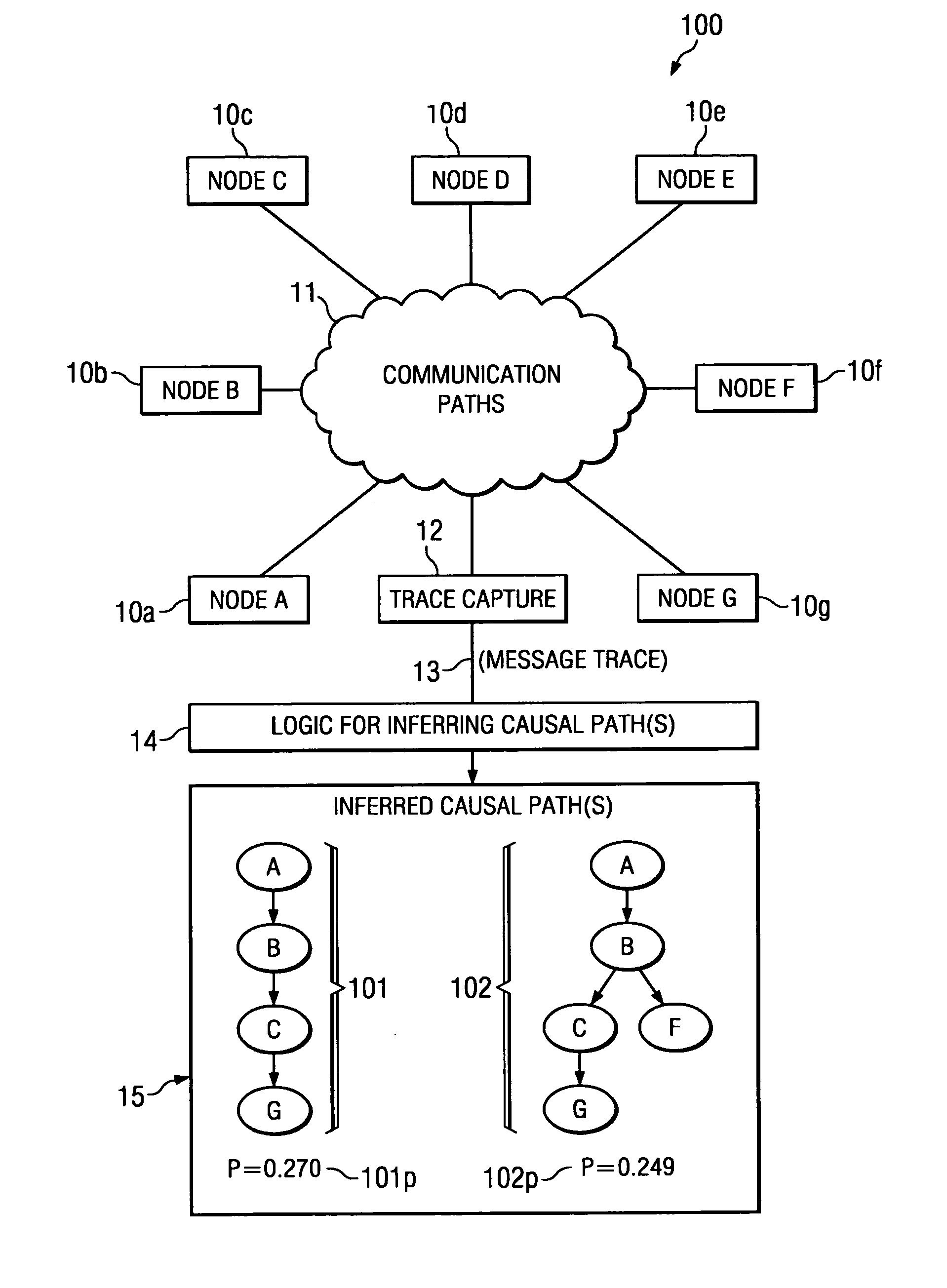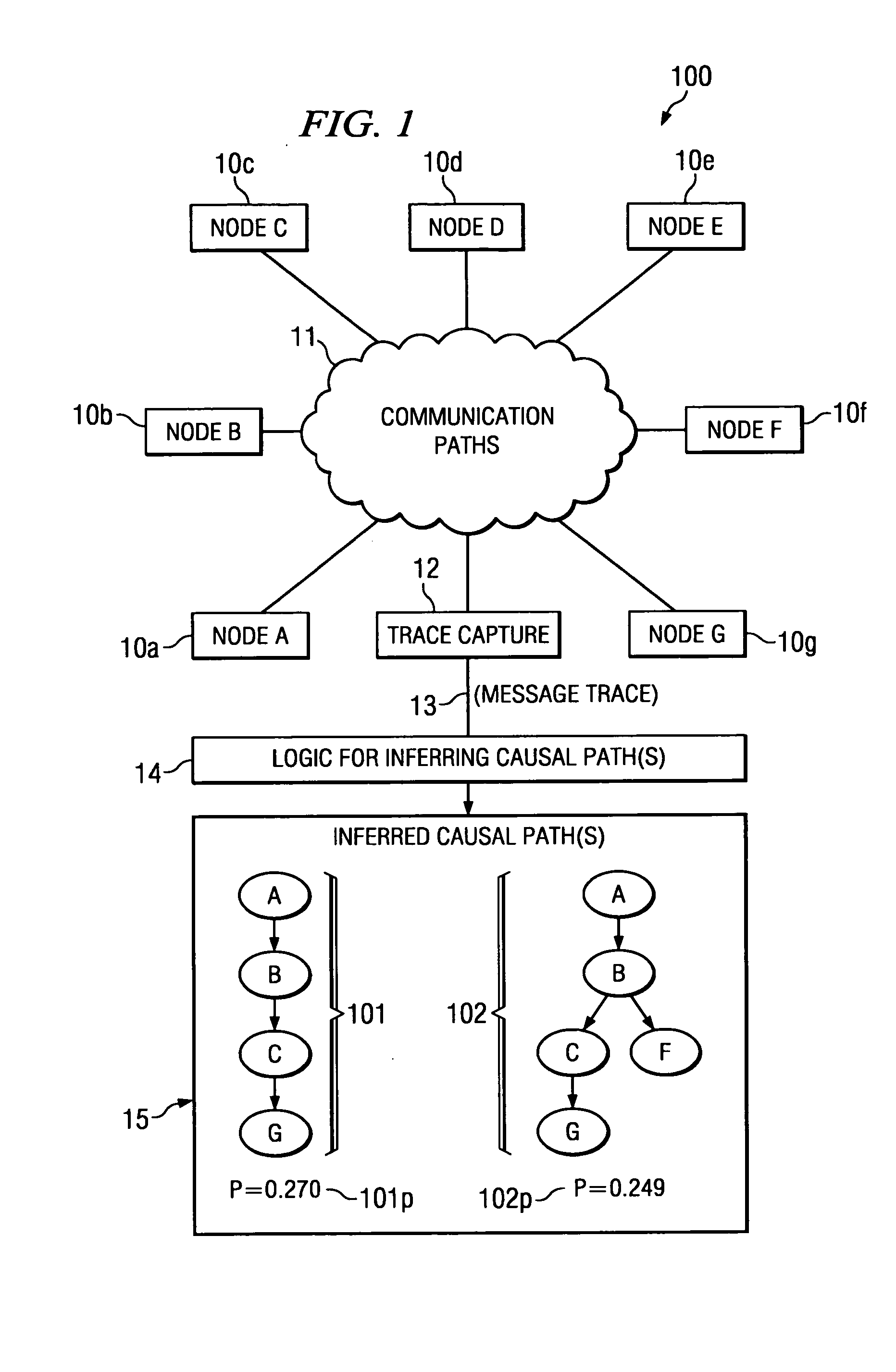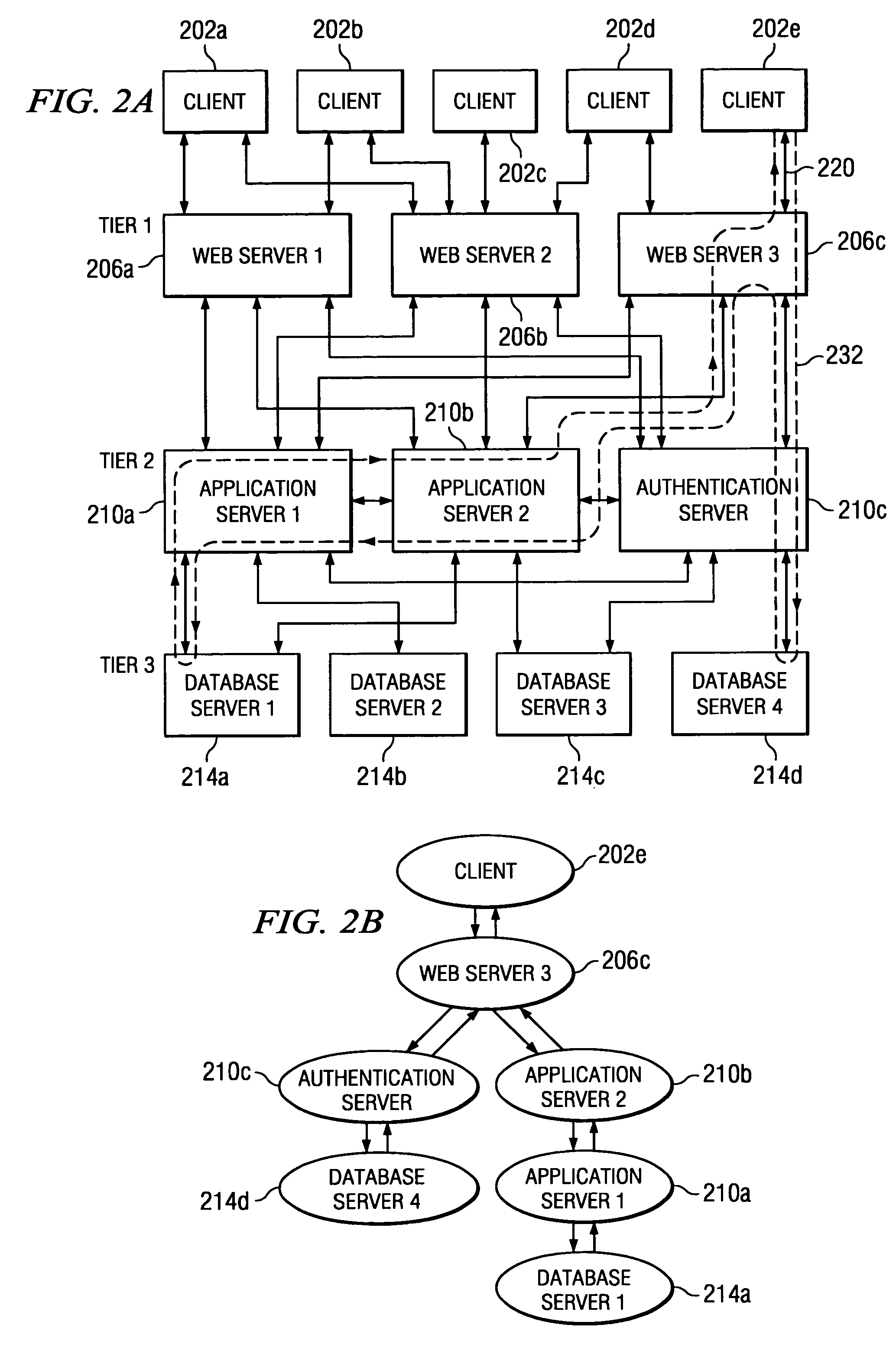System and method for inferring causal paths in a distributed computing environment
a distributed computing environment and causal path technology, applied in computing, digital computers, instruments, etc., can solve the problems of measurable delays in messages between nodes, difficult debugging, optimization and maintenance of many distributed applications, and difficult construction and deployment of wide-area distributed systems
- Summary
- Abstract
- Description
- Claims
- Application Information
AI Technical Summary
Problems solved by technology
Method used
Image
Examples
Embodiment Construction
[0017] Embodiments of the present invention provide techniques for inferring causal paths from traces of the communication events (messages) in a distributed system. In certain embodiments, the paths in an inferred causal path are annotated with performance information, such as an indication of the time spent at each node of the causal path and / or an indication of the amount of resources consumed by each node of the causal path.
[0018] Certain embodiments provided herein for inferring a causal path utilize an algorithm that determines possible causes for each message in a trace based on the message's proximity in time to other messages in the trace. The time delay between the receipt of a message by a given node and the given node sending a message to another node is modeled using common service-time distributions, which the algorithm uses to assign a probability to each “causal link” between two messages (e.g., it assigns a probability that Message A-to-B caused message B-to-C). Su...
PUM
 Login to View More
Login to View More Abstract
Description
Claims
Application Information
 Login to View More
Login to View More - R&D
- Intellectual Property
- Life Sciences
- Materials
- Tech Scout
- Unparalleled Data Quality
- Higher Quality Content
- 60% Fewer Hallucinations
Browse by: Latest US Patents, China's latest patents, Technical Efficacy Thesaurus, Application Domain, Technology Topic, Popular Technical Reports.
© 2025 PatSnap. All rights reserved.Legal|Privacy policy|Modern Slavery Act Transparency Statement|Sitemap|About US| Contact US: help@patsnap.com



